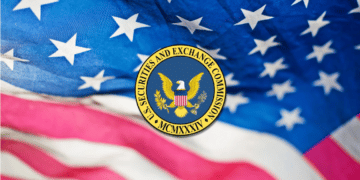Ripple claims that the lack of clear regulation on digital assets could start a massive exodus on tech firms and tech talent far away from the United States. In the Ripple news today we take a closer look at how this could play out in the future.
The head of global institutional markets at Ripple Breanne Madigan says that the first clear use case for XRP and other cryptocurrencies is in the payments industry. She explained:
“At Ripple, we see payments as the first obvious use case for digital assets. A key innovation in leveraging a blockchain for payments is that you can move value efficiently—and many subsequent use cases for blockchain technology, including trade finance, smart contracts and lending—all stem directly from the payments innovation. This is why we are focused on this baseline use case first. With digital assets, for the first time, there’s a way to settle transactions across currencies instantaneously—this helps optimize risk management frameworks, and reduces significant friction pain points including time, trapped capital, and excessive fees. As additional use cases beyond payments develop, more capital will enter the space.”
From here, Ripple claims that the company has a primary focus on XRP and is using the digital asset as a bridge between fiat currencies. Madigan explained that the company’s on-demand Liquidity platform is designed to give the banks and financial institutions a fully compliant way to send money across the world starting with only one fiat currency and settling in another using XRP to facilitate transactions:
“Ripple’s vision is to collaborate between traditional financial institutions and technology innovators for the explicit use case of cross border payments. Specifically, by leveraging the digital asset XRP as a bridge currency, Ripple facilitates instant fiat-to-fiat payments across borders for partners like MoneyGram. There is no singular third party or global central bank that keeps track of how cross-border payments move and are settled, so the world has created a complex system of correspondent banking and nostro/vostro accounts that trap an estimated $10 trillion dollars in capital. Using digital assets as a bridge currency can efficiently free up this trapped capital and make the process of sending money cross-border faster, less expensive, and more scalable, by providing liquidity on demand.”
Madigan says that the regulators should offer more clarity on how cryptocurrencies are treated and regulated. Without clear regulation, the US risks losing the leadership position in new and emerging technologies.
DC Forecasts is a leader in many crypto news categories, striving for the highest journalistic standards and abiding by a strict set of editorial policies. If you are interested to offer your expertise or contribute to our news website, feel free to contact us at [email protected]























Discussion about this post